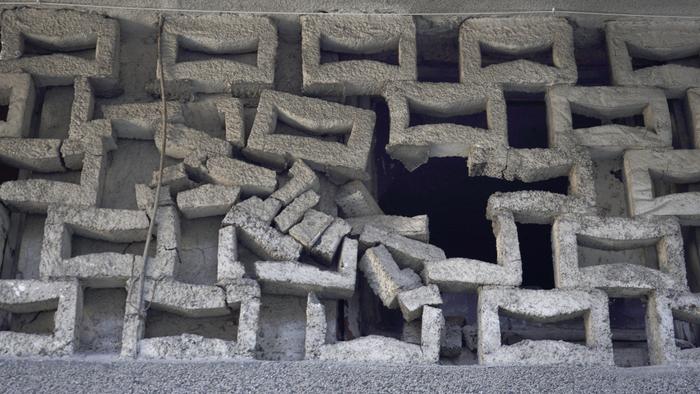
Pauline Shongov, Wall with Hole, photograph, 2021.

Pauline Shongov, Wall with Hole, photograph, 2021.
Pauline Shongov, Wall with Hole, photograph, 2021.
In 2012, the TV show Zabraveniat Sliven (Forgotten Sliven) focused its pilot episode on the iconic Ottoman bathhouse Kon Banya as a first attempt to preserve the architectural heritage of a city in Bulgaria that had by then witnessed 23 years of post-industrial decline in the wake of socialist modernity.1 The description accompanying the video asserts that Forgotten Sliven which was “intended to begin with the oldest preserved building in Sliven—Kon Banya—actually begins days after [the bathhouse] was demolished.”2 This meant that by the time of its viewing, the first episode would have no tangible effect on protecting the heritage site from demolition. It also revealed that the show was left to rebrand its identity in the face of an urban environment that was rapidly disappearing.
In a cool tone riddled with irony, host Yordanka Radancheva reflects on how this centuries-old bathhouse will remain unstudied now that the building no longer exists. Acknowledging the deep ineptitude felt in presenting the bathhouse through a scholarly lens, Radancheva instead opts to build a story around the site by approximating its shape from the reaches of a distant memory. Over the course of the episode, her work turns into an experiment of collective remembering. Relying on a local to guide viewers through the space of the bathhouse as it appeared at the time of filming it a year before its demolition, Radancheva highlights the experience of a community whose memory will become the only living archive of the site once the bathhouse is removed.
This culture of neglect-by-demolition—where historical buildings, left in a vulnerable state of active disrepair, overtime experience a social death—has come to characterize a period of ongoing transition from planned to market economy in Bulgaria known as Prehod. Marked by land grabbing and accelerated privatization, Prehod is a contemporary condition of economic and political uncertainty that has placed architectural heritage in recent years at risk of disappearing from the public gaze. Evoking the increasing challenges that the field of preservation practice in Bulgaria has had throughout Prehod, Radancheva’s earlier observation raises the following question: What kind of knowledge production is possible when one’s object of study is only but a fragment of the whole?
A shot in Forgotten Sliven, where a small trace of Kon Banya’s once humble appearance graces the edge of the frame, offers a possible answer. Displayed upon the table, stacked neatly in the foreground, are a few salvaged bricks. Rescued from the aftermath of demolition, the bricks appear both formal in the way that they are placed centrally in the TV frame and casual in the way that they at first go unmentioned by the host. As the only material evidence surviving the bathhouse, the bricks become a testament to a cultural heritage site that, by the time of the show’s premier, can only be accessed through oral historical accounts. When there is nothing else to salvage but to glean from the rubble of what is left behind, the brick on the table offers one possible way to think with matter.
1 “Кои са най-старите постройки в Сливен: Старите Бани – най запазени,” Седмица, No. 672, 2007, Print. Since no scholar professionally studied the bathhouse, dates on when it was built are highly contested. There are speculations that the bathhouse may date as far back as Byzantine times. There is consensus that it was most definitely built before the 19th c. and is probably as old as the 14th c. For the purposes of this text, I have resorted to describing it as part of the Ottoman period in the manner of most accounts.
2 Raddev. “Zabraveniqt Sliven 01,” Youtube, June 3, 2014. Online.
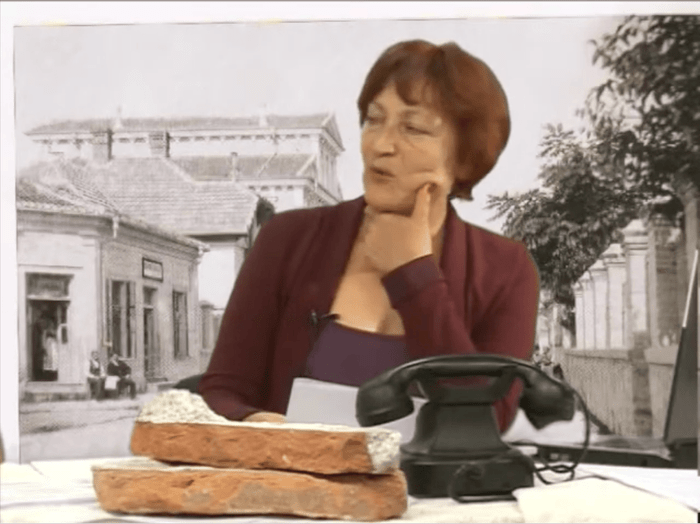
Figure 1. Zabraveniqt Sliven (Forgotten Sliven), screenshot, Youtube, June 3, 2014. Courtesy of Yordanka Radancheva.
The active disappearance of cultural heritage sites is strongly present in the figure of the fragmented archive. Sitting in one of those bony Soviet-era chairs across a table padded in deep vintage-green vinyl, I find myself in the comforts of the Regional Sliven Historical Museum in Bulgaria. As Victoria searches for literature on bathhouses to address my inquiry, I feel at ease to be in the company of someone who for the first time understands my intractable request for any and all material on a broad and general subject. This had previously been an impossible task for the city’s regional archive to take on. As for the case in the city of Varna—where I had probed a few years earlier into the history of a Soviet-era bathhouse called the Mushroom, a landmark scheduled for demolition at the time—my interest in the subject in fact became an open invitation for the archive to deny me access to relevant documents out of suspicion.
Archives guard their interests closely, so it seems. Jacques Derrida would be the first to remind us that this reserved nature stems as far back as its Greek root arkheion. Meaning “house, domicile” of the chief magistrates in ancient Greece known as the archons, who would preside over it with wary eyes, arkheion is in effect what Derrida calls a form of “house arrest [in which] archives take place.”3 The ability to sift through, to extract, to disclose some material while leaving other kinds inaccessible are all the workings of an authority intent on making certain histories legible while letting others fade into shadow archives. Akira Lippit defines the shadow archive as “another archive that replaces the archive, that takes place in its ruin as an afterthought and effect of destruction.”4 It is no news that archives in themselves have always already been partial objects, be it imperial or authoritarian impulses that drive the curation and excision of information. Archives have to do as much with the act of being held captive by the state as with the state of how we remember. It is this mnemonic excavation at play that captures Lippit’s notion of the shadow archive: something that has been annihilated but continues to survive in some other form as the sensorial, the affective, the half-memory, the mythic.
Four years ago, and many miles west across the Atlantic Ocean in the city of Boston, in passing conversation over an entirely different matter that made soft landings on the subject of the archive, Bernhard Siegert spoke of another ruin. During World War II, when bombs rained down on Berlin, they left gaping holes in the structure of a building that housed an extensive archive. When the building was fully restored years later, one could still trace out the physical contours of the holes by tracking down where document types began and ended in the catalog listings.5 The physical destruction from the bombs on the architecture of the archive had impressed itself as much textually as it had materially upon the files. Reading the gaps left in the record thus gave rise to a second architecture, a phantom archive.6 A space that both preserves a record of history and houses a material imprint of a historical moment, this phantom archive is as much a repository for absent documents as it is for a built form that has already disappeared.
On the street Graf Ignatiev in Sofia is where I heard about another case of the disappearing building. At the unassuming café Club Journalist, I met photographer Dobrin Keresteliev on a brisk fall day last year. Here, cozied around a wall table in a dimly lit space littered with obsolete cinema cameras, a wall-sized Lichtenstein poster, and other film paraphernalia, Keresteliev spoke of his time spent working for the union of Bulgarian architects. In 1974, he began a project of immense proportion, documenting major cities across the country. Every year, a select group of Eastern Bloc and USSR politburo members called the Diplomatic Corps embarked on a tour of the cities listed on the redevelopment roster. Every year, Keresteliev set out to photograph them at this time when these cities, with newly remodeled streets and building facades meant to impress their visitors, were in their most pristine and presentable state. For the next 20 years, he would take detailed shots and descriptions of architecture as well as aerial photography and film of urban space, amassing a collection of over 360,000 photo negatives and slides as well as several boxes of film reels. This archive was stored at the union’s office until 1995 when the director, in deciding to turn the studio into a storage space, had all the film recycled and photos and slides discarded.7 This would not have been the first time that Keresteliev’s studio had been subjected to an act of disappearance, but it most certainly had become its last. As a result, the image of these anonymous buildings from across the country had now also been subjected to disappear twice. With most of these buildings demolished, others left to ruin, and little documentation of their past preserved, 20 years of the country’s history had been lost.
3 Jacques Derrida, Archive Fever: A Freudian Impression (Chicago: University of Chicago Press, 1996), 2.
4 Akira Mizuta Lippit, Atomic Light (Shadow Optics) (London: University of Minnesota, 2005), 8.
5 Bernhard Siegert in conversation with author, Spring 2020.
6 The term phantom archive first appears in Akira Lippit’s close study of Freud’s Moses and Monotheism (Lippit, Atomic Light, 20). More recently, it was adopted by Gregory Sholette as a name for the codified materials in activist art that rarely make it into the historical record (Sholette, “1968 and After: The Phantom Archive of Social Movement Culture,” In The Art of Activism and the Activism of Art (London: Lund Humphries, 2022)). The term in this text refers to the very literal destruction of a site, which has caused a physical absence in the archive on the level of urban and architecture history.
7 Dobrin Keresteliev in conversation with author, Sept 2023 and Jan 2, 2024.
While the Transition Period of 1989 may not have been the direct cause of this archive’s disappearance, this story is at least a fitting analogy for the pervasive attitude of disregard towards cultural heritage that continues to persist in Bulgaria today. In this sense, the phantom archive becomes less about what used to be in the archive, and far more about the attitudes and conditions that have helped shape archival loss. The figure of the disappearing building and document that haunts these two stories begs the question: How do we reckon with loss inflicted upon cultural and historical memory? To this day, the extent of archives that the Bulgarian Communist Party purged after its fall in 1990 remains unknown as does the number of cultural heritage sites that have been destroyed.8 How then are we to tend to knowledge with what are only fragments left behind?
One way for the fragment to surface is certainly from the absence of material, while one way for it to go missing is through excess. Archives in Bulgaria at times find themselves knee-deep in unprocessed files, leaving archivists unequipped to manage a search that expands beyond appellations or dates. To research broadly for the history of bathhouses in Sliven, therefore, can be a most unwelcomed request. The researcher will instead be encouraged to return with the specific name of the building or architect at hand. To track this down when the genealogy of a site name may vary across Roman, Slavic, Bulgar, Byzantine, Ottoman, or Soviet times can make an already difficult task almost impossible. Not unlike the work of the Balkan archaeologist, one would have to ask around in the local café, the city streets, the apartment blocks: What lore and hearsay survives in this place – of mogilas, of gold, of fortress walls?
In the town of Glufishevo, where the archaeologists from the Regional Sliven Historical Museum are completing their annual site surveys on Thracian and Roman ruins, I accompany Victoria as she asks villagers about their knowledge of nearby archaeological sites. Across various accounts on magic and myth, words like kalé bair, oozoom bair, dere begin to surface. It is these words repeated often, which share Turkish roots, that help discern truth from fiction. In many ways, this method hearkens back to when archaeology was only just forming as an academic discipline in Bulgaria, and the work of discovering archaeological sites relied entirely on the spoken word. One would ask the elders of the village to show them the stonework of a ruin wall or the hidden place where they had found ancient coins. Many of those who used to know the generational history of their towns have since passed away.9 It is in this search for that which is disappearing or already has disappeared that archaeology shares a likeness with the figure of the phantom archive. In years to come, who will we turn to when there is no one left that can remember? How does research adapt to this form of forgetting?
Hannah Freed-Thall’s compelling essay on the expansive approach of close reading of the modernist text offers one possible answer to this last question. Freed-Thall argues for an “ecological practice” in observation that beckons one to “get as close as possible to the objects described, to tarry with small life forms, with phenomena that are incalculable, unmasterable […] to attend to the minute alterations to the surface of things” and in so doing “deny the reader or observer the privilege of epistemological domination.”10 Thinking with matter calls for a humble kind of looking—one that is both acutely observant of the environment from which matter emerges and attentively receptive to its contingencies. Resigning itself to the space where forms of incongruency and slippage reside, thinking with matter also provokes a generous way of understanding difference.11 Drawing you close to its surface, matter demands unconventional modes of engagement as it simultaneously evokes a logic of its own. This practice in close reading becomes important as a methodology, particularly when traditional kinds of information are difficult to come by. In cases like these, something as simple as a brick becomes as much a worthwhile form of research as any dusty file shelved in the stacks. What then does it mean for matter—in all its material, thermal, atmospheric states—to be an object of study? How does the close reading of a brick, at the scale of the brick, yield new forms of research?
8 Tzvetan Tzvetkov, “Tzvetan Tzvetkov in front of the ‘Telegraf’ Village: 14,900 Monuments are Left Unattended,” Bulgarian National Audit Office, Aug. 3, 2019. Online.; “Bulgaria: Many Thousands of Communist-era Military Intelligence Staff Records Destroyed,” The Sofia Globe, Aug. 18, 2016. Online.
9 Veselin Ignatov in conversation with author, Oct 2023.
10 Hannah Freed-Thall, “Thinking Small: Ecologies of Close Reading,” (In Modernism and Close Reading, 1st ed., edited by James David, 228-242. Oxford: Oxford University Press, 2020), 230.
11 This interrelation between close reading and difference is one of the main lines of inquiry that Freed-Thall explores throughout her text.
Evoking both memory and touch, the brick on the table in Forgotten Sliven as the lone trace of Kon Banya’s absence provokes the question: What can an archive built around embodied experience look like? If we take as a point of departure something as simple as a brick, what forms of knowledge production may this propel us towards co-creating?
The research-based initiative Off-site, which I co-founded with Borislav Angelov and Maya Shopova, offers one approach to probing the collaborative possibilities of the mobile fragment. A virtual laboratory that collects, disseminates, and prompts artistic exchange, Off-site studies unofficial heritage sites left in ruin throughout the Prehod period in Bulgaria. Some of these sites have already undergone demolition since the start of this project three years ago. Others have been left neglected for decades. The point at which a cultural heritage site becomes banal enough to be forgotten, and therefore on the cusp to be demolished, is the stage of the built form that we find most productive. From these sites, Off-site collects mineral and residual matter as prompt material that it distributes by mail to select artists who are then ensured with its care for the duration of the project that they, in turn, produce as a response to the prompt. Wrestled out of the grips of archaeological time, the mobile fragment in this way contributes to a growing archive of circulating objects that are imbued with new meaning as matter moves, transforms, and lands in new contexts. Thus, the mobile fragment is retooled into an artifact that accrues value across geographies through changing hands. This elicits a key question guiding Off-site: What forms of archival practice does curating fragments from cultural heritage sites—where the state and act of ruination as noun and verb is simultaneously at work—enable? How does the figure of the archive, and by extension the question of historical memory, adapt to matter that is constantly subjected to a process of change? The Off-site archive gives rise to haptic and affective forms of cultural production: a first step towards reckoning with the uncertainty of how to produce knowledge that grapples as much with the building itself as with its absence.
As the mobile fragment changes shape over the course of its use, it offers a temporary preservation practice on the memory of a ruin. This is evident in the work of Off-site artist Manar Moursi. The artist received by mail three stones, which were collected from Sredna Banya: the oldest bathhouse in Sliven still standing. Dating back to the 18th c., the bathhouse although resembles Roman-Byzantine architecture was most likely built during the Ottoman period.12 Some locals refer to it colloquially by the Turkish word for public bath: hammam. Also known as “Middle Bath’’ due to its position between Gigova Banya and Kon Banya, Sredna Banya sits anonymously concealed behind a dense screen of vegetation, fenced off by a metal enclosure with a parking lot reserved for casino guests across the street, awaiting a similar fate to that of Kon Banya. This ghosting of the site through active neglect inscribes the bathhouse within a phantom cartography of the city. When I ask Sliven locals to recall the urban environment as they remember it sixty years ago, they name repeated visits to bathhouses that no longer exist: Kravaravata Banya, Baba Yankenata Banya, Sabinata Banya, Kadunkovata Banya.
12 “Тревога за Средната Баня,” Сливен, No. 17, Sept 22, 2014, Print.
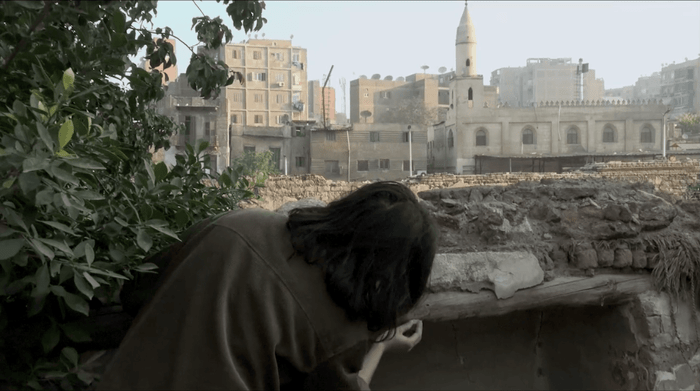
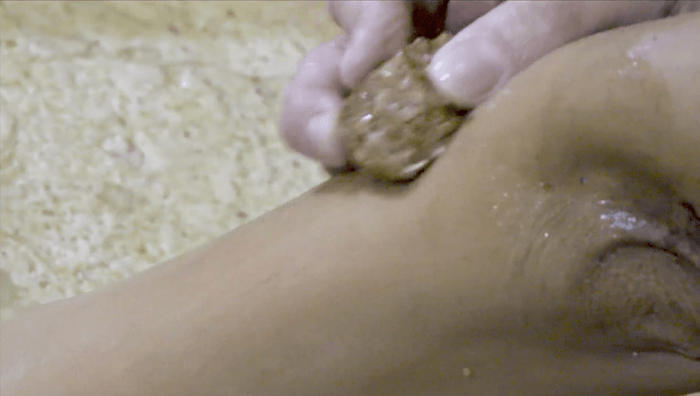
Figure 2. Manar Moursi, Everything that Remains to Be Lived, screenshots, Off-site, 2022. Courtesy of the artist.
This phantom mapping carries over into Moursi’s work. Titled Everything that Remains to Be Lived (2022), Moursi’s project takes two hammams in Cairo—the Malatili and Tambali—as sites of departure to practice rituals of embalming two bodies: one of flesh and one of stone. In the video on the right, Moursi rubs the stone from Sredna Banya against her body, exfoliating, cleansing, shedding. Here, the purpose of the stone is to take on the abrasive figure of pumice: to scrub, to clean. Hammam, a word with etymological roots in Arabic related to heat and heating, in this way invites a shift away from the infrastructure that houses bathing procedures to the atmosphere that enables them.13 Moursi’s rubbing of the skin becomes a simultaneous form of release and exertion, where pumice breaks down from water and heat along with the dirt and dead skin. The stone slowly dissolves through this ritual of cleansing. In contrast, the stone in the video on the left has an added softness to it. Stone against stone: the lines it makes are ones meant to soothe, to trace. Moursi here employs the stone as a drawing tool that has a touch just hard enough to study the topography of the wall against the pressure of the hand, but soft enough not to leave a mark—to gently detect the bumps, cracks, and minute particularities that make up the facade. Her body aligns with the rubble strewn on the floor. She picks up rocks decisively from the ground, then measures them against her body before propping them up, in, and against crevices on the ruin wall.
Working against the invisible hand of the archivist and that of the archaeologist, Moursi instead makes her body both a visible medium through which forms of care are performed and a legible marker upon which the figure of loss impresses itself. Moursi’s selection of these two sites responds to the issue of cultural heritage preservation that Egypt has grappled with in recent years: out of the 137 hammams that used to populate Cairo, only 16 are still functioning today.14 By engaging with a practice in the close reading of matter through the figurative gesture of the hand, Moursi contends with this fragmented archive.
13 “Definition Meaning Bathroom,” Alaamany, Accessed Jan. 2024. Online.
14 Abdel-Rahman Sherief, “The Ancient Tradition of Cairo’s Bathhouses,” Daily News Egypt, Oct. 10, 2012, Online.; See also Galal, Ahmed, “‘An Iconoclasm’: Demolishing Egypt’s Heritage for Modernisation,” The New Arab, Sept. 5, 2023.
During the demolition of Kon Banya as depicted in Forgotten Sliven, it is said that the excavator bore into the brick walls with difficulty. Ranging 60-80 cm in thickness, the bathhouse walls are built to withstand the erosion of water and, it is assumed, survive seismic activity.15 If it had not been for the human hand in this matter, guest historian on the TV show Vasil Dechev asserts that the bathhouse would have survived for many more centuries. This, however, results in a different kind of architecture.
15 Raddev, “Zabraveniqt Sliven,” 31:20.
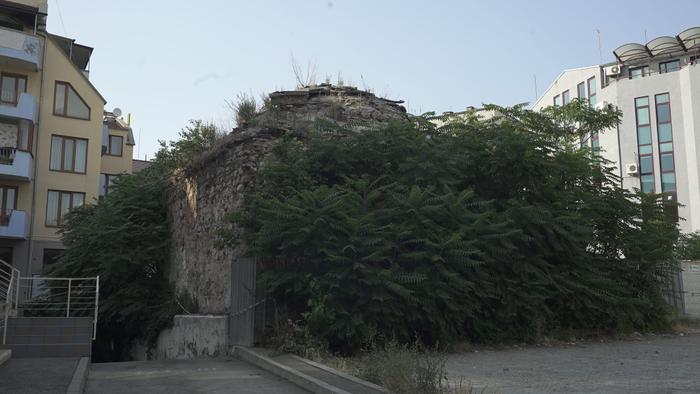
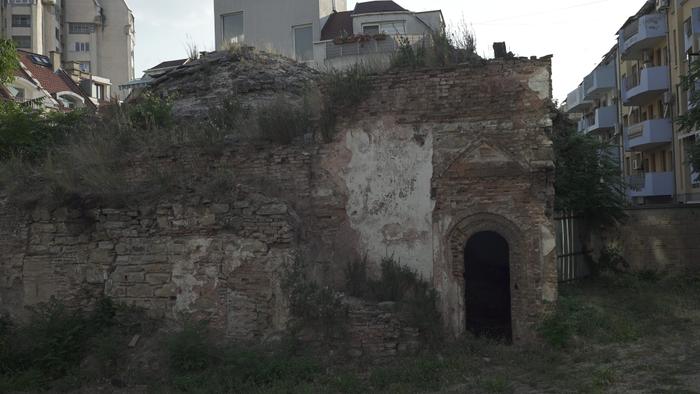
Figure 3. Pauline Shongov, Sredna Banya, photographs, 2023.
Not far from Kon Banya is where Sredna Banya still stands. In the state of a half-ruin, Sredna Banya has been re-inhabited by soil and mud, reduced to the substance of ground. While Forgotten Sliven includes some footage of Sredna Banya, one can only imagine—with the bathhouse’s exponential overgrowth of vegetation since then—how it has also come to resemble more closely the interior of the now-demolished Kon Banya. Footage of Kon Banya depicts tree roots hanging through the oculus in the apex of the dome while others, having made their way into the very sediment of the structure itself, follow the shape of the dome like a crown. It is a movement back into the earth, where a slow burial takes place. Reclaimed by nature, Sredna Banya is blanketed by a mass of shrubs that cover it and, in turn, have made it a covert place. The growth of the shrub, a kind of fence, obfuscates and conceals as much as it shields and protects. In due time, the bathhouse will disappear behind a curtain of greenery that moves beyond the frame of what is left visible. A dark ecology will take place. It too will be forgotten.
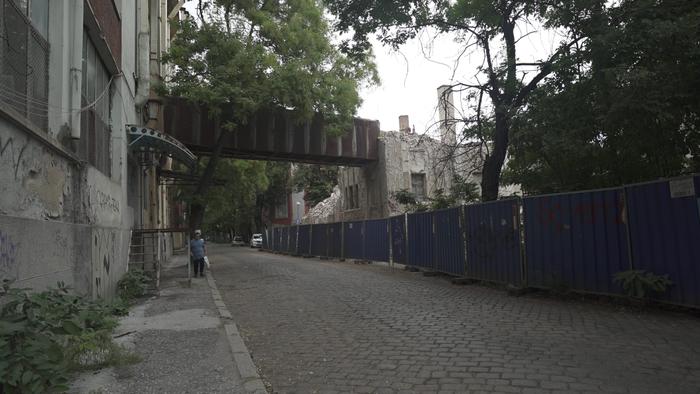
Figure 4. Pauline Shongov, Plovdiv Tobacco Warehouse, photograph, 2022.
In Plovdiv, a different type of fence has been erected. In light of news that it would soon be turned into an official cultural heritage site, one of the historical tobacco warehouses had been demolished under the cover of night.16 It too had been left to an overgrowth of vegetation, where now a metal fence stands in its place and brick upon brick lies enclosed. A fate that many cultural heritage sites share across the country, this condition makes visible an archaeology of a brick without a movement in time. When I walked passed this tobacco warehouse in 2022, one of the bricks peeked just beyond the fence. Like the brick on the table in Forgotten Sliven, it beckoned to be touched, to be handled: the contingent encounter with the fragment of a disappeared building, a phantom archive. The word contingency after all shares haptic roots that derive from the Latin tangere, meaning to touch.17
16 “The Day in 3 News: Tobacco Warehouse in Plovdiv Demolished,” Kapital Insights, Sept 2, 2022, Online.; See also “The Prosecutor’s Office: The Warehouses in the Tobacco City were Demolished Legally,” Maritza, Jan. 20, 2023, Online.
17 “Contingent,” WordReference, Accessed Jan. 2024.
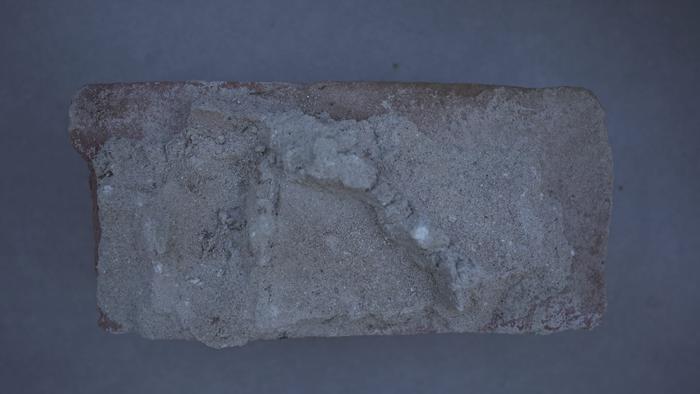
Figure 5. Pauline Shongov, Brick, photograph, 2022.
On that brisk fall day of last year, after recounting the story of his lost photographs, Dobrin Keresteliev offered to show me the national film archive. When I had last visited in 2017, the archive still operated by very humble means even as it had begun the slow process of transitioning towards more modern ones. Parts of it had been logged into an internal computer database, yet the filing system still depended heavily on the index card. As for the film reels and other source material, all had been reallocated to an off-site storage for the duration of the construction work, remont, that was underway. The archive was after all in a state of remont, I had been told: the material I was looking for could not be found now, and it could not be found later. Not in a year, not in two, perhaps sometime in some foreseeable future. This had not been my first encounter of this kind, so remont had started to feel like an easy excuse for archives to withhold access to information. That is why when Keresteliev and I finally arrived at the building, I was not that surprised to find the first floor freshly renovated and completely emptied of furniture and people. The place had certainly undergone remont, and along with it, the archive seemed to have also entirely disappeared. Where repair work is meant to bring things together, remont instead becomes yet another mechanism through which the archive falls apart. Remont, or life under construction, is set in a perpetual motion of transition that calls for a radically different approach to thinking with matter and the archive.
Throughout Forgotten Sliven, we are thrust into a different kind of temporality altogether. On one hand, an urban landscape of rapid change appears to exceed the speed by which television is capable of broadcasting its content to the public in an effective and actionable way. On the other hand, the show progressively devolves into an unscripted, inchoate state of confusion, blistering with a tongue-in-cheek agitation marked by the frustrated realization of just how messy the bureaucratic process of heritage preservation is and punctured by the feedback loop of a phone line that keeps interjecting the program with its ringing and lost signal. At one point, when Radancheva is able to connect with a caller, her voice is lost to a distant echo of the feedback loop that resounds from the television set on the transmitting end of the call. The linear time of television is briefly arrested in favor of a more elliptical, asynchronous time.
Despite technical setbacks, Radancheva stoically tries to welcome callers in. Sitting behind a table composed of an eclectic set design resembling something between a news anchor desk and the warm interior of a living room, Radancheva greets the viewers of the TV show into her studio. Throughout the course of delivering her scripted report on Kon Banya—that most times turns into a highly improvised one—she makes concerted efforts to remind viewers to call in. This is a show, after all, that seeks to include the voices of a public that has otherwise been repeatedly excluded from conversations on cultural heritage preservation. When the phone finally rings, Radancheva, at first taken aback, recollects herself in time to pick up the handset in front of her. To her own surprise, by doing so, she inadvertently hangs up the call. It takes her a moment to realize that answering calls on the TV set has an order of operations entirely different from what one would intuit. In a moment of confusion for both the viewers and the host, the phone turns out to be a prop – an artifice that extends the prefabricated taste that adorns the rest of the stage.
Over the course of the episode, the bricks on display fade into the figure of a prop as well, no different than the rotary dial phone resting nearby that on occasion serves to remind both viewers to call in and the host to answer despite its inability to receive and send signal. In a similar fashion, the bricks serve the dual function of visual aid and artifice. Not only are they objects that stand in as a visual representation for the bathhouse, but they are also building blocks that although were once used to physically prop up other bricks for structure are now at most ornamental pieces of a televised scene. Having since been jettisoned by the wayside, the detritus that they once were has newfound purpose in the space of a TV set. At the start of the show, Radancheva addressed viewers with a warm welcome to her studio, making no false attempts to gloss over the curated efforts at play in the white cloth covering the table, the telephone, the bricks, and the black-and-white backdrop of an unidentified Sliven city street as mis-en-scene. Here, the studio—a highly curated stage for discussing real matters of heritage importance—reflects the built form in question. Becoming an artificial device that occupies prime real estate, the empty shell of the bathhouse has performatively been turned into a very real prop that figures in the outside world. Accordingly, the brick on the table, which has come to stand in for what was once whole, becomes one more way to work with and through the fragmented archive, even at the very site where the building itself is disappearing.
While surveying the field for ceramic or stone fragments with which to date the soil, the archaeologists read the surface of the earth for any traces of ancient settlements to register. These are sites that will eventually be discovered and will most likely never be fully studied. The primary purpose of a field survey, explains one of the archaeologists in Glufishevo, is to map unofficial sites onto an official record: to make that which has become part of a phantom cartography visible on paper. Lifting what has faded into the texture of the soil out from the depths of the ground through the figure of a line, the shape of a drawing, the document becomes the basis by which to archive these imprints that scatter the land.
Working with fragments can get messy. They are unruly, excessive, and often hard to read. They can lend their appearance to many lines of thought. They can go into many directions all at once. There is far more that is absent than present in the context that shapes them, which makes our work as researchers full of holes. Of course, the work in due course, inevitably, becomes about those holes and the fragment turns out to be just one of the few ways to work around them. If we follow the way of the Balkan archaeologist, then the hole is in fact a rich find. You see a hole, you dig. A hole is a telling sign that someone else has been there before you. If someone else has been there, then they must have been looking for something. If they were looking for something, then maybe they left behind something else that is now yours to glean, even if only at most it warrants a close reading of that which is already disappearing.
Bibliography
“Bulgaria: Many Thousands of Communist-era Military Intelligence Staff Records Destroyed.” The Sofia Globe. Aug. 18, 2016. https://sofiaglobe.com/2016/08/18/bulgaria-many-thousands-of-communist-era-military-intelligence-staff-records-destroyed/.
“Contingent.” WordReference. Accessed Jan. 2024. https://www.wordreference.com/definition/contingent.
Derrida, Jacques. Archive Fever: A Freudian Impression. Chicago: University of Chicago Press, 1996.
“Definition Meaning Bathroom.” Alaamany. Accessed Jan. 2024. https://www.almaany.com/ar/dict/ar-ar/%D8%AD%D9%85%D8%A7%D9%85/.
Freed-Thall, Hannah. “Thinking Small: Ecologies of Close Reading,” In Modernism and Close Reading, 1st ed., edited by James David, 228-242. Oxford: Oxford University Press, 2020.
Galal, Ahmed. “‘An Iconoclasm’: Demolishing Egypt’s Heritage for Modernisation.” The New Arab. Sept. 5, 2023. https://www.newarab.com/analysis/demolishing-egypts-heritage-modernisation.
“Кои са най-старите постройки в Сливен: Старите Бани – най запазени,” Седмица, No. 672, 2007. Print.
Lippit, Akira Mizuta. Atomic Light (Shadow Optics). London: University of Minnesota, 2005.
Raddev. “Zabraveniqt Sliven 01,” Youtube, June 3, 2014. https://www.youtube.com/watch?v=S8HRRInMQaQ.
Sherief, Abdel-Rahman. “The Ancient Tradition of Cairo’s Bathhouses.” Daily News Egypt. Oct. 10, 2012. https://www.dailynewsegypt.com/2012/10/11/the-ancient-tradition-of-cairos-bath-houses/.
“The Day in 3 News: Tobacco Warehouse in Plovdiv Demolished.” Kapital Insights. Sept 2, 2022. https://kinsights.capital.bg/politics_and_society/2022/09/02/4386866_the_day_in _3_nes_tobacco_warehouse_in_plovdiv/.
“The Prosecutor’s Office: The Warehouses in the Tobacco City were Demolished Legally.” Maritza. Jan. 20, 2023. https://www.marica.bg/plovdiv/gradat/prokuraturata-skladovete-v-tyutyuneviq-grad-sa-saboreni-zakonno.
“Тревога за Средната Баня.” Сливен, No. 17, Sept 22, 2014. Print.
Tzvetkov, Tzvetan. “Tzvetan Tzvetkov in front of the ‘Telegraf’ Village: 14,900 Monuments are Left Unattended.” Bulgarian National Audit Office. Aug. 3, 2019. https://www.bulnao. government.bg/en/news/v-pechatni-medii/cvetan-cvetkov-pred-v-telegraf-14-900-pametnici-sa-ostaveni-bez-nadzor/.
“I am thoroughly fascinated by the object of study, its material history and how it challenges the archive as something that has its own agency. By ‘thinking with matter’, the object is not only free of an epistemological deadlock but its own house arrest of memory and is allowed to echo and take on new shapes and forms. Can objects remember and forge new paths of historical knowledge?”
“Much of my own writing is concerned with memory and I suppose takes the form of archiving my own experiences. Living with a, sometimes debilitating, mental health condition I have often been left to wonder whether what I remember is real or not, or indeed if that question even matters. The foundation of my own essay in this project is a shared experience between myself and my dad, namely sitting together in the bathroom. I deliberately didn’t discuss this with him before writing it as I wanted to discover how different memories are of it/them.”
Pauline Shongov, “Brick Dust Matter: The Disappearing Archive and the Mobile Fragment,” Metode (2024), vol. 2 ‘Being, Bathing and Beyond’